NAOMI Commissioning Images
(For GLAS commissioning images, see
separate page.)
- Star pair, separation 0.16-arcsec, imaged in
H
- Star pair, separation 0.22-arcsec, imaged in
the optical
- Star pair, separation 0.36-arcsec, imaged in
the optical
- Near-earth asteroid 2002 NY40
- Cat's Eye planetary nebula (N6543)
- Neptune
- WR140
- Star pair, separation 0.25 arcsec
- Wolf 1346 - search for planetary companions around WDs
- G183 - search for low-metallicity brown dwarfs
- V511 Lyr - JHK search for brown dwarfs
- M13 globular cluster, in Halpha
- M13 globular cluster in I (with MIT CCD)
- Planetary nebula BD 303369
- Star pair, separation 0.5 arcsec
- 1-hour exposure on star, FWHM 0.24 arcsec
- Uranus
- Star behind OSCA mask
- William Herschel
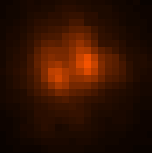
0.22-arcsec binary (the fainter star is top left),
imaged in I-band with NAOMI/OASIS.
The AO-corrected FWHM is 0.10 arcsec, in natural
seeing of 0.5 arcsec.
Observed July 2005.
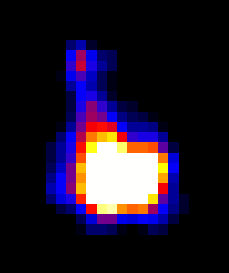
Top of page
0.36-arcsec star pair, imaged in I-band with NAOMI/OASIS.
The natural seeing in the open-loop image, left, is 0.7 arcsec.
On closing the AO loop, the FWHM is reduced to 0.2 arcsec (right).
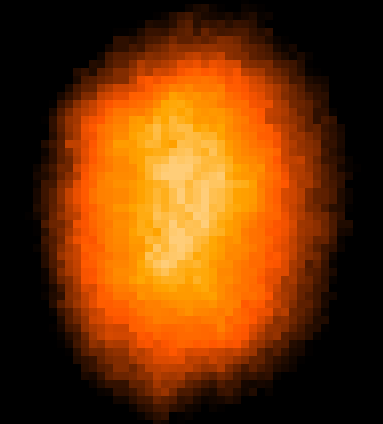
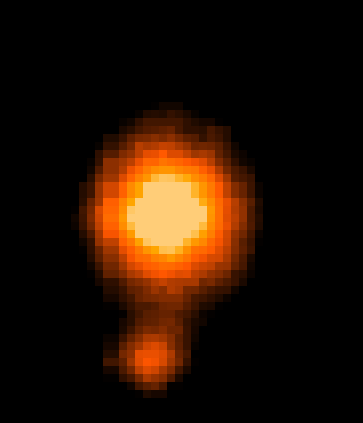
The correction is also good in V-band,
where the FWHM is improved from 0.7 to 0.3 arcsec.
Observed 2004 Jul 2.
Top of page
Near-earth asteroid 2002 NY40.
H-band image taken during the night of closest approach, 2002 Aug 17.
FWHM 0.11 arcsec, despite rapid differential tracking, up to 5 arcsec/sec.
Click
here for press release, movie and more details,
and
here for BBC coverage.
Observers: Javier Licandro, Paco Prada.
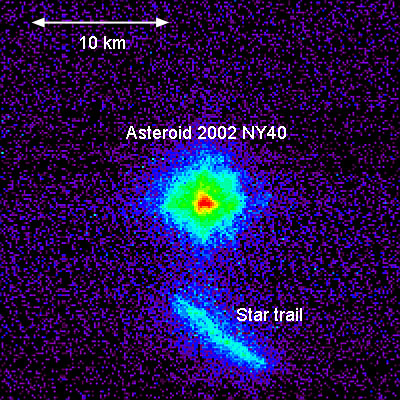
Top of page
N6543 (Cat's Eye) planetary nebula in Paschen beta (1.2 microns).
600-sec integration, using central star
(V = 11) as a wavefront reference.
AO correction from 0.7 to 0.2 arcsec. The finest
structures visible in the nebula are ~ 0.3 arcsec across.
Image is 19 arcsec top to bottom. May 2002.
Post-processing by Nik Szymanek.
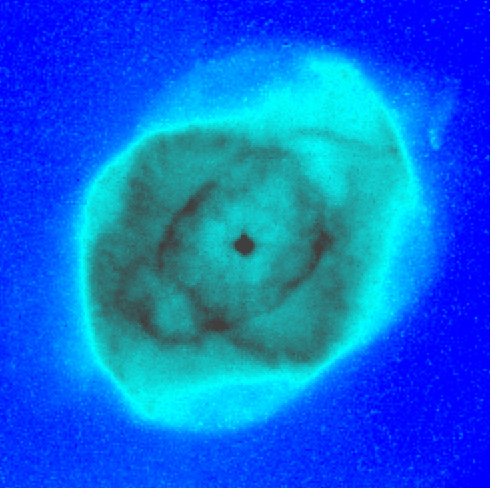
Top of page
Neptune in H band (1.6 microns).
120-sec integration, using a faint star
(V = 13.5, upper right) as a wavefront reference.
AO correction from 0.5 to 0.3 arcsec. May 2002.
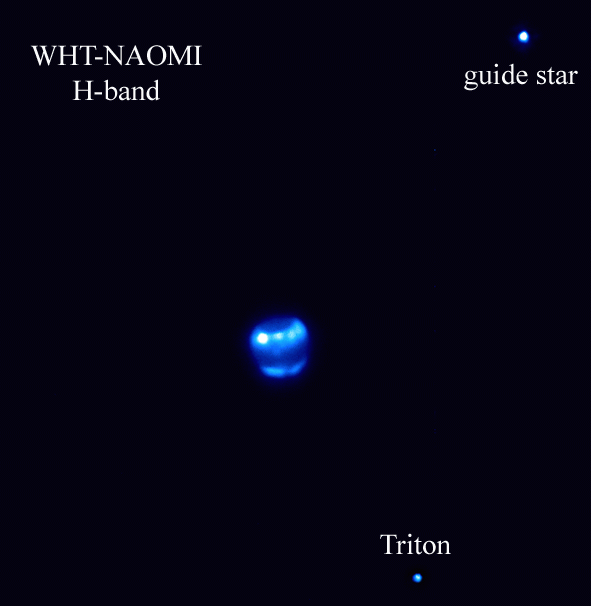
Top of page
WR140 in K band (2.2 microns).
180-sec integration.
The dust features to the S and E of the star
(that to the S is 0.25 arcsec away) are real and
are consistent with features seen by Keck last year.
Matching them up allows calculation of proper motion:
0.6 - 0.8 marscec/day for the clump in the S.
Observed Jul 2002 for Peredur Williams, who provided this
image (MEM image deconvolution using PSF of a star).
Further details can be found
here.
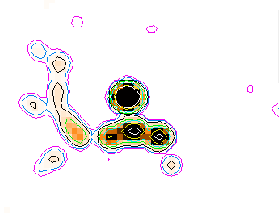
Top of page
Young stellar system, imaged in H-band during a search for
still-contracting substellar companions (brown dwarfs and Jupiters).
These two M3V stars, combined V mag 10.3, served as the guide star.
They are separated by 0.25 arcsec. The AO-corrected PSF has
FWHM 0.15 arcsec out to a radius from the guide star of at least
10 arcsec (where another star was detected).
The observation was made by Rafael Rebolo and
Jose Antonio Caballero, on 2002 Jun 16.
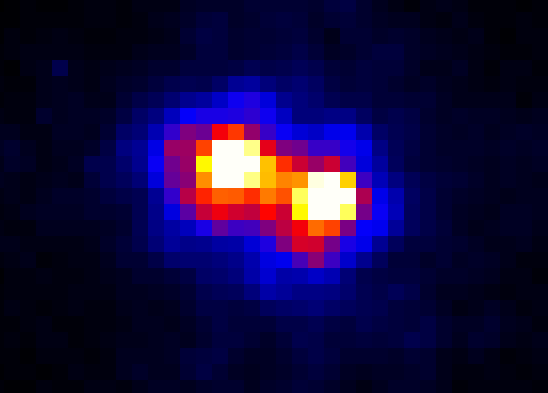
Top of page
Wolf 1346 imaged in J band (1 hour) as part of a search for
planetary companions around white dwarfs.
It was observed in service mode 2002 May 31 for Matt Burleigh,
who provided this reduced and annotated
image.
The numbers indicate J mags, and the separations the objects would
have from the white dwarf
if they were physically associated.
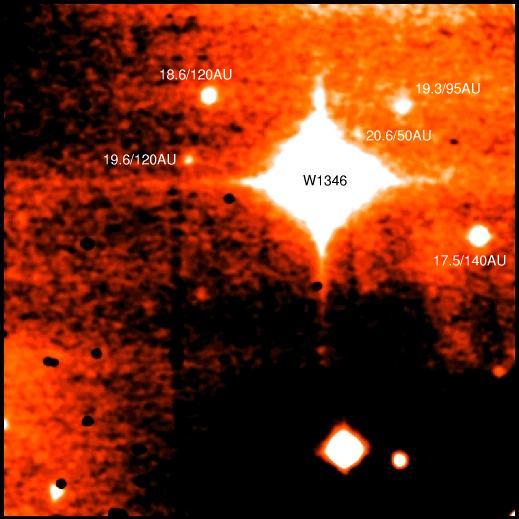
Top of page
1600-sec H-band image (quick-look reduction) of low-metallicity star G183,
taken by Maria Rosa Zapatero 10 Sep 2003.
The faint object 6 arcsec to upper right of centre
is a candidate low-metallicity brown dwarf, FWHM 0.2 arcsec,
11 mags fainter than the bright star.
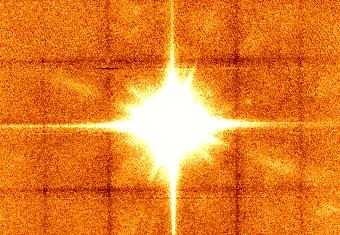
Top of page
JHK false-colour image of V511 Lyr, FWHM 0.3 arcsec, taken by
Jose Antonio Caballero. The redder objects in the field, e.g. the faint
object lower-left of centre, are candidate brown dwarfs.
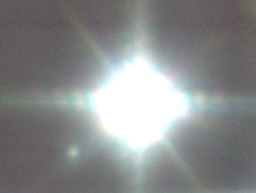
Top of page
Globular cluster M13 in Halpha light, demonstrating
NAOMI's performance in the optical, where AO systems are not expected
to achieve the diffraction limit.
The FWHM has been improved
from 0.7 arcsec (natural seeing) to 0.4 arcsec.
Sep 2001.
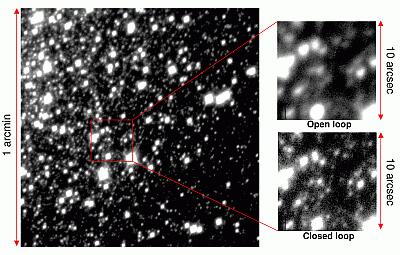
For further NAOMI images in the optical,
click here.
Top of page
Globular cluster M13 in I band
Commissioning image taken May 2003 during pre-OASIS tests, showing
the 60-arcsec field of view at the new optical port.
FWHM 0.46 arcsec closed-loop (in 0.65 arcsec natural seeing).
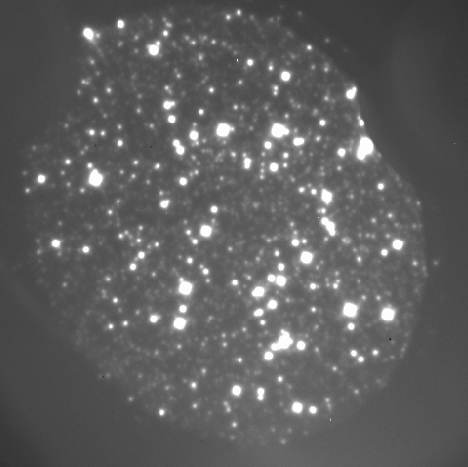
Top of page
Planetary nebula BD 303369 in K band (2.2 microns).
The nebula (left-hand image) has
diameter 3.8 arcsec top to bottom .
The blobs around the central (AO-reference) star are ~ 1% residuals
in the PSF.
90-sec exposure. The right-hand image shows an enlargement
of the area around the central star, FWHM 0.13 arcsec
(look-up table selected to show, very faintly, the first diffraction ring)
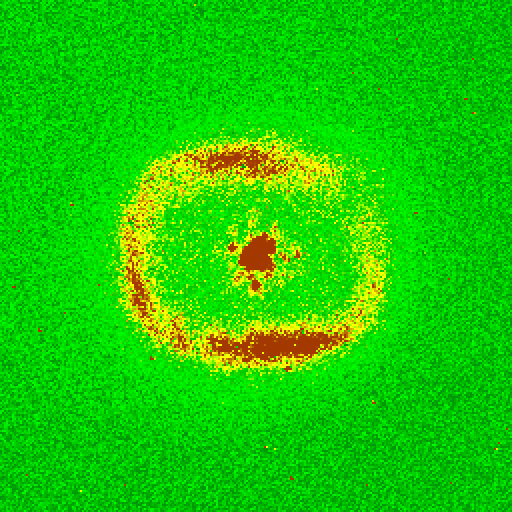
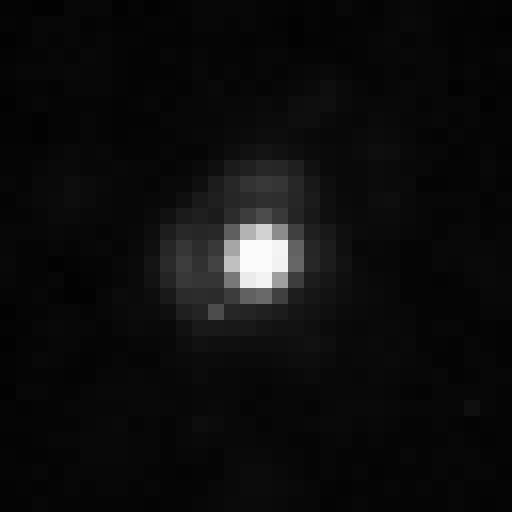
Click
here
for comparison between HST, Gemini and NAOMI images (Richard Myers,
Durham).
Top of page
H-band image of a guide star R = 11 which turned out to be
a 0.5-arcsec double. The wavefront sensor guided well on
this star, delivering FWHM 0.16 arcsec.
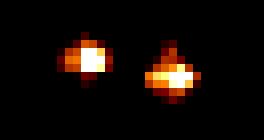
Top of page
1-hour H-band image of a guide star, FWHM 0.24 arcsec, demonstrating
system stability.
Observed by Paco Prada, Sep 2002.

Top of page
Uranus in H band (1.6 microns).
The rings of Uranus are just visible (oriented ~ up-down).
A cloud band is visible in the rescaled image of Uranus
right of the main image.
The angular diameter of Uranus was about 4 arcsec.
100-sec integration, using a faint star (V ~ 13) ~ 25 arcsec
from Uranus (bottom right) as wavefront reference.
Corrected FWHM 0.5 arcsec at Uranus.
2002 Jun 22.
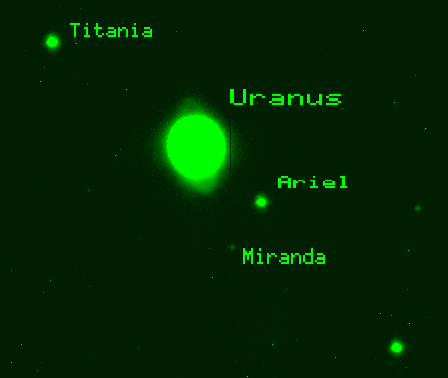
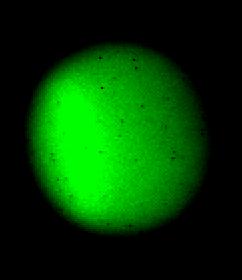
Top of page
Bright star behind 2-arcsec mask in OSCA
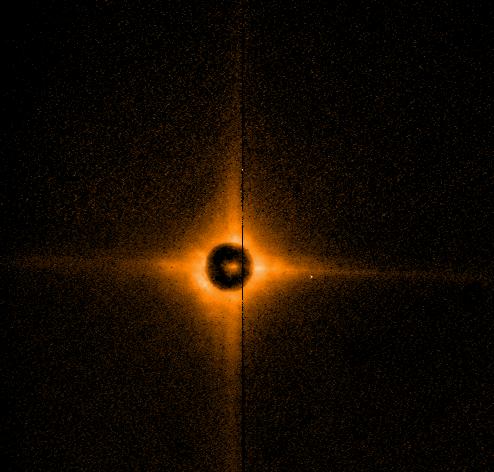
Top of page
William Herschel
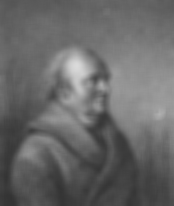
|
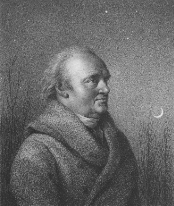
|
| Without NAOMI
| With NAOMI
|
(Portrait reproduced from the
Royal Astronomical Society portrait library,
by permission of the RAS).
Top of page
|

